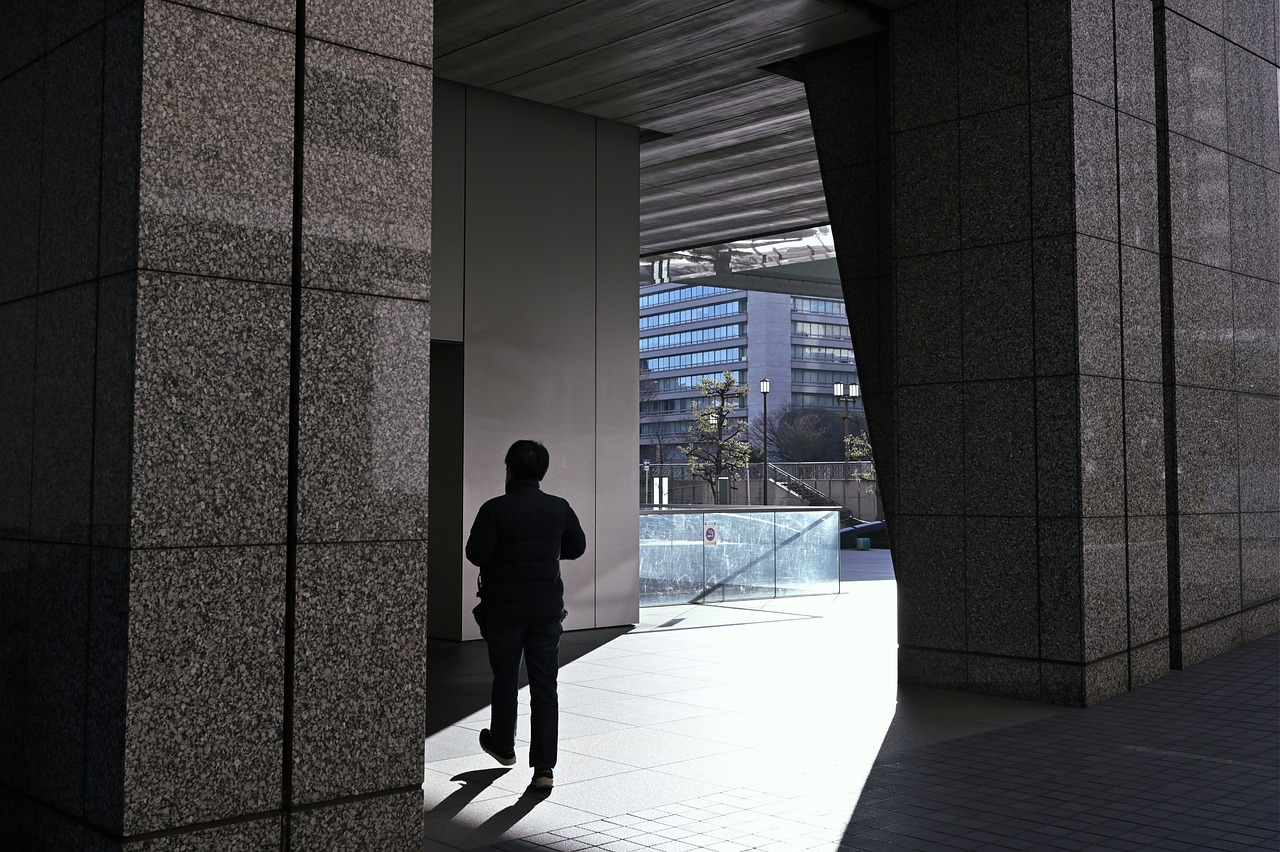How to Choose Green Materials for Urban Development
In an era where urban development is booming, the selection of materials plays a crucial role in shaping our cities' future. Choosing green materials is not just a trend; it's a necessity for sustainable living. But what exactly does it mean to choose green? It’s about opting for materials that are not only environmentally friendly but also contribute positively to our health and well-being. Think of it as picking the freshest ingredients for a meal – the better the quality, the healthier the outcome. So, how do we navigate the vast ocean of options available to us? Let’s dive deeper!
Green materials are defined as those that have a minimal environmental impact throughout their life cycle. This includes everything from extraction and production to usage and disposal. Imagine building a house with materials that breathe life into the environment rather than suffocating it! Characteristics of green materials often include being renewable, recyclable, and non-toxic. For instance, bamboo is a fantastic choice due to its rapid growth and ability to regenerate without the need for replanting. By understanding what green materials are, urban developers can make informed choices that align with sustainability goals.
Adopting green materials offers a plethora of advantages that extend beyond mere aesthetics. First and foremost, using these materials can significantly reduce the overall carbon footprint of a project. It’s like driving a hybrid car instead of a gas guzzler – you’re making a choice that benefits the planet! Furthermore, green materials can improve energy efficiency, leading to lower utility bills for occupants. Not to mention, they contribute to enhanced public health by reducing exposure to harmful chemicals often found in traditional building materials.
The environmental impact of green materials is profound. By significantly lowering greenhouse gas emissions and pollution levels, these materials pave the way for a healthier planet. For instance, using recycled steel instead of new steel can reduce energy consumption by up to 75%! This is not just a number; it translates to cleaner air and a more sustainable future.
Using renewable resources is vital in conserving our planet's natural materials. Think of it as a bank account – if we keep withdrawing without depositing, we’ll eventually go bankrupt. By choosing materials that can be replenished, we ensure that future generations will have access to the resources they need.
One of the most significant advantages of green materials is their ability to minimize waste during construction. Traditional building methods often generate a mountain of debris, but with sustainable practices, we can turn that mountain into a molehill. For example, modular construction techniques allow for precision in building, which reduces excess material waste. It's like cooking a perfect meal without any leftovers!
While the initial investment in green materials may seem daunting, the long-term economic advantages are undeniable. Just like investing in quality over quantity, spending a little more upfront can lead to substantial savings down the line. Lower energy costs, reduced waste disposal fees, and potential tax incentives can all contribute to a healthier bottom line.
Choosing the right green materials involves several critical criteria. It’s not just about picking what looks good; it’s about making decisions that will stand the test of time. Key factors to consider include:
- Life Cycle Assessment: Evaluating the environmental impact from production to disposal is essential.
- Certifications and Standards: Familiarizing yourself with certifications like LEED and BREEAM can guide your selections.
A life cycle assessment (LCA) is like having a crystal ball for your materials. It evaluates the environmental impact of materials from their inception to their end-of-life. By understanding the full journey of a material, developers can make choices that minimize negative impacts. It's a game-changer for sustainable construction!
Certifications such as LEED (Leadership in Energy and Environmental Design) and BREEAM (Building Research Establishment Environmental Assessment Method) serve as guiding stars in the selection process. They ensure that materials meet stringent sustainability criteria. Think of these certifications as badges of honor – they signify that a material has undergone rigorous scrutiny and is worthy of your project.
Innovation is at the heart of sustainable urban development. Emerging technologies and materials are reshaping the landscape, allowing for greater efficiency and sustainability. For example, the use of recycled and upcycled materials is gaining traction, reducing waste and promoting a circular economy. Imagine turning old tires into durable pavement – it’s a win-win!
Recycled and upcycled materials not only reduce waste but also offer unique aesthetic qualities. From reclaimed wood to recycled glass, these materials tell a story while being environmentally friendly. They are like the vintage finds in a thrift store – each piece has character and history!
Biodegradable materials are another exciting avenue for urban development. These eco-friendly alternatives can break down naturally, reducing landfill burdens. Think of them as the compost of construction – they nourish the earth instead of polluting it.
Despite the myriad benefits, there are challenges in adopting green materials. Initial costs can be a barrier, but overcoming these financial hurdles is crucial for long-term sustainability. Strategies such as seeking grants or financial incentives can alleviate the burden. Additionally, market availability can vary by region, making local sourcing essential. By developing local markets for green materials, we can ensure that sustainable options are accessible to all.
Initial costs can be a significant hurdle for many developers. However, considering the long-term savings and environmental benefits can help shift the perspective. It’s like investing in a quality pair of shoes – they may cost more upfront, but they’ll last longer and provide better comfort.
The availability of green materials can vary widely depending on the region. This highlights the importance of local sourcing and market development for sustainable options. By supporting local businesses that provide green materials, developers can help create a more sustainable future while stimulating the local economy.
Q: What are green materials?
A: Green materials are those that have a minimal environmental impact throughout their life cycle, including extraction, production, usage, and disposal.
Q: Why should I use green materials?
A: Using green materials can reduce your carbon footprint, improve energy efficiency, and enhance public health.
Q: How do I know if a material is green?
A: Look for certifications like LEED or BREEAM, and consider conducting a life cycle assessment to evaluate its environmental impact.
Q: Are green materials more expensive?
A: While initial costs can be higher, the long-term savings in energy and maintenance often outweigh these costs.

Understanding Green Materials
This article explores the importance of selecting eco-friendly materials in urban development, discussing key factors, benefits, and innovative solutions to promote sustainability in modern construction practices.
Green materials are essential components in the quest for sustainable urban development. But what exactly are they? In simple terms, green materials are those that have a minimal environmental impact throughout their life cycle—from extraction and production to disposal. They are often sourced from renewable resources and designed to be non-toxic, recyclable, or biodegradable. This makes them a crucial element in reducing the ecological footprint of construction projects.
One of the defining characteristics of green materials is their ability to promote sustainability while still meeting the functional and aesthetic needs of urban development. For instance, materials like bamboo and reclaimed wood not only reduce the need for new timber but also add unique visual appeal to buildings. Moreover, the use of recycled materials, such as reclaimed bricks and glass, can significantly lower the demand for virgin resources, thus conserving our planet's finite natural assets.
Additionally, the role of green materials extends beyond mere aesthetics; they contribute to enhanced energy efficiency and improved indoor air quality. For example, insulation made from recycled denim or sheep's wool can keep buildings warm in winter and cool in summer, reducing the need for heating and cooling systems. This not only lowers energy consumption but also translates into cost savings for occupants.
To better understand the impact of green materials, it's crucial to consider their life cycle. Here’s a brief overview:
| Phase | Impact of Green Materials |
|---|---|
| Extraction | Minimal disturbance to ecosystems; often sourced locally |
| Production | Lower energy requirements and reduced emissions |
| Use | Improved energy efficiency and indoor air quality |
| Disposal | Recyclable or biodegradable options reduce landfill waste |
In summary, understanding green materials is about recognizing their potential to transform urban development into a more sustainable practice. By selecting materials that are both environmentally friendly and effective, developers can play a pivotal role in shaping cities that are not only livable but also resilient to the challenges posed by climate change.
Adopting green materials offers numerous advantages, including reduced carbon footprints, improved energy efficiency, and enhanced public health. Here, we explore these benefits in detail.
Green materials significantly lower greenhouse gas emissions and pollution levels. This subheading examines how their use contributes to a healthier environment.
Using renewable resources helps conserve natural materials. This section highlights the importance of resource conservation in urban development.
Green materials often lead to less waste during construction. Here, we discuss strategies for minimizing waste through sustainable practices.
Investing in green materials can lead to long-term cost savings. This subheading focuses on the economic benefits associated with sustainable construction practices.
Choosing the right green materials involves several criteria. This section outlines key factors to consider when making selections for urban projects.
A life cycle assessment evaluates the environmental impact of materials from production to disposal. This subheading explains its importance in selecting sustainable options.
Understanding certifications such as LEED and BREEAM can guide material selection. This section discusses the significance of these standards in ensuring sustainability.
This section highlights emerging technologies and materials that are reshaping urban development, showcasing innovative solutions that enhance sustainability and efficiency.
Using recycled and upcycled materials reduces waste and promotes sustainability. Here, we explore examples of how these materials are utilized in construction.
Biodegradable materials offer eco-friendly alternatives for various applications. This subheading discusses their benefits and potential uses in urban development.
Despite their benefits, there are challenges in adopting green materials. This section addresses common obstacles and potential solutions for urban developers.
Initial costs can be a barrier to adopting green materials. This subheading examines strategies for overcoming financial challenges in sustainable construction.
The availability of green materials can vary by region. This section discusses the importance of local sourcing and market development for sustainable options.
1. What are green materials?
Green materials are those that have a minimal impact on the environment throughout their life cycle, from extraction to disposal.
2. Why should we use green materials in urban development?
Using green materials helps reduce carbon footprints, conserve resources, and improve public health.
3. What are some examples of green materials?
Examples include bamboo, recycled metal, reclaimed wood, and biodegradable insulation materials.
4. How can I ensure the materials I choose are truly green?
Look for certifications like LEED or BREEAM, and consider conducting a life cycle assessment to evaluate their impact.
5. Are green materials more expensive?
While initial costs may be higher, green materials can lead to long-term savings through increased energy efficiency and lower maintenance costs.

Benefits of Using Green Materials
When it comes to urban development, the choice of materials can significantly impact not only the environment but also the overall quality of life for the inhabitants. Adopting green materials is like planting a seed for a sustainable future; it nurtures the environment, enhances energy efficiency, and promotes healthier living spaces. So, why should we prioritize these eco-friendly options? Let's dive into the numerous benefits that come with using green materials in construction.
First and foremost, one of the most compelling reasons to embrace green materials is their positive environmental impact. By utilizing materials that are sustainably sourced or recycled, we can dramatically reduce our carbon footprint. For instance, buildings constructed with green materials can lower greenhouse gas emissions by up to 40%. This is akin to taking thousands of cars off the road! Not only do these materials conserve energy during their lifecycle, but they also minimize air and water pollution, contributing to a cleaner and healthier planet.
Moreover, green materials are often designed to improve energy efficiency. Imagine living in a home that naturally regulates its temperature, reducing the need for heating and cooling systems. This is possible with materials such as high-performance insulation and energy-efficient windows. According to studies, buildings that incorporate these materials can save up to 50% on energy costs. This means more money in your pocket, and who wouldn’t love that?
Another significant advantage is the enhancement of public health. Traditional materials often contain harmful chemicals that can lead to poor indoor air quality. In contrast, green materials are typically free from volatile organic compounds (VOCs) and other hazardous substances. This leads to healthier indoor environments, reducing the risk of respiratory issues and allergies. Imagine walking into a space that feels fresh and clean, where the air you breathe is not only safe but invigorating!
In addition to these benefits, using green materials promotes resource conservation. By choosing renewable resources, we help preserve the planet’s natural materials. This is crucial in urban development, where the demand for resources is ever-increasing. For example, bamboo, a rapidly renewable resource, can replace traditional hardwoods, allowing forests to thrive and regenerate. It’s like opting for a reusable water bottle over single-use plastics; it’s a small change with a significant impact.
Furthermore, the implementation of green materials often leads to waste reduction during construction. Sustainable practices encourage the use of prefabricated components and modular designs, which can minimize waste and optimize resources. For instance, estimates show that using recycled materials can reduce construction waste by up to 90%. This is a win-win situation: less waste in landfills and a more efficient construction process.
Lastly, let’s not forget the economic advantages that come with investing in green materials. While the initial costs may seem higher, the long-term savings are undeniable. Lower energy bills, reduced maintenance costs, and potential tax incentives for sustainable building practices can lead to significant financial benefits over time. In essence, choosing green materials is not just an environmentally responsible decision; it’s also a smart financial investment.
In summary, the benefits of using green materials in urban development are multifaceted, ranging from environmental and health advantages to economic savings. By making conscious choices about the materials we use, we can create a more sustainable future for ourselves and generations to come. So, are you ready to take the plunge into the world of green construction?
- What are green materials? Green materials are those that have a minimal impact on the environment throughout their lifecycle, from production to disposal.
- How do green materials benefit the environment? They reduce carbon footprints, lower greenhouse gas emissions, and minimize pollution.
- Are green materials more expensive? While they may have higher initial costs, green materials often lead to long-term savings through reduced energy bills and maintenance costs.
- What are some examples of green materials? Examples include recycled steel, bamboo, reclaimed wood, and low-VOC paints.

Environmental Impact
When we talk about green materials, one of the most compelling reasons to embrace them is their profound . The construction industry is notorious for its contribution to greenhouse gas emissions and pollution. By opting for eco-friendly materials, we can significantly alter this narrative. Imagine if every building project could reduce its carbon footprint simply by choosing the right materials! This isn't just a dream; it's becoming a reality for many urban developers.
Green materials are designed to minimize environmental harm at every stage of their lifecycle. From production to disposal, these materials are engineered to lower emissions and reduce waste. For instance, using locally sourced materials can cut down on transportation emissions, thereby decreasing the overall carbon footprint. Additionally, many green materials are made from renewable resources, which means they're replenished naturally over time. This contrasts sharply with traditional materials that often deplete finite resources, leading to long-term ecological damage.
The environmental benefits of green materials can be categorized into several key areas:
- Reduction of Greenhouse Gas Emissions: By using materials that are less energy-intensive to produce, we can significantly lower the amount of CO2 released into the atmosphere.
- Improved Air Quality: Many green materials contribute to better indoor air quality, reducing pollutants that can affect health.
- Conservation of Natural Resources: Utilizing recycled or sustainably sourced materials helps in preserving our planet's precious resources.
Moreover, the use of green materials plays a critical role in mitigating climate change. As cities grow and urban sprawl becomes more prevalent, the choices we make in construction can either exacerbate or alleviate the effects of climate change. By focusing on sustainability, we can create structures that not only meet the needs of today but also safeguard the environment for future generations.
In conclusion, the environmental impact of using green materials is not just a statistic; it’s a movement towards a more sustainable future. By incorporating these materials into urban development, we are not only improving our surroundings but also making a profound statement about our commitment to the planet. So, the next time you find yourself involved in a construction project, ask yourself: How can we make this greener?
- What are green materials? Green materials are those that have minimal environmental impact, often sourced sustainably and designed to be energy-efficient.
- How do green materials reduce carbon footprints? They typically require less energy to produce and often utilize recycled content, which helps lower overall emissions.
- Are green materials more expensive? While initial costs may be higher, the long-term savings in energy and maintenance often outweigh these costs.
- Can I find green materials locally? Yes, many regions have suppliers specializing in green materials, making it easier to source them sustainably.

Resource Conservation
Resource conservation is a pivotal aspect of sustainable urban development, acting as a bridge between our current consumption habits and a more sustainable future. When we talk about using green materials, we are not just referring to their eco-friendly nature; we are also emphasizing their ability to conserve valuable resources. Imagine a world where buildings are constructed with materials that have been carefully sourced to minimize the depletion of our planet's natural resources. This isn't just a dream—it's a reality that we can achieve through informed choices in urban development.
One of the key characteristics of green materials is their reliance on renewable resources. These are materials that can be replenished naturally, such as bamboo, cork, and certain types of recycled metals. By opting for these materials, we help to reduce the strain on finite resources, ensuring that future generations have access to the same materials we do today. For instance, consider the use of bamboo in construction; it grows rapidly and can be harvested every few years, making it a sustainable choice compared to traditional hardwoods that take decades to grow.
Furthermore, the concept of resource conservation extends beyond just the materials themselves. It encompasses the entire lifecycle of a building, from design to demolition. By implementing strategies that prioritize resource conservation, urban developers can significantly reduce waste. For example, using modular construction techniques allows for components to be prefabricated and assembled on-site, minimizing excess material use and cutting down on waste. Resource-efficient designs not only save materials but also energy, contributing to a more sustainable urban landscape.
Incorporating resource conservation into urban development also involves considering the local sourcing of materials. When materials are sourced locally, the carbon footprint associated with transportation is drastically reduced, which is a win-win for both the environment and the local economy. By supporting local suppliers, developers can foster community relationships and promote a circular economy, where resources are reused and recycled within the community.
Ultimately, the importance of resource conservation in urban development cannot be overstated. It is not merely a trend; it is a necessary shift towards sustainable practices that ensure the longevity of our planet's resources. By prioritizing the use of green materials and adopting innovative construction methods, we can create urban spaces that are not only functional but also environmentally responsible. This approach not only benefits the environment but also enhances the quality of life for residents, creating healthier and more vibrant communities.
- What are green materials? Green materials are those that are sourced and used in a way that minimizes environmental impact, such as recycled, renewable, or sustainably harvested materials.
- How do green materials contribute to resource conservation? They reduce the need for non-renewable resources, promote recycling and upcycling, and minimize waste during construction.
- Can using green materials save money? Yes, while the initial investment might be higher, the long-term savings from energy efficiency and reduced waste can lead to significant cost reductions.
- What are some examples of renewable resources? Examples include bamboo, cork, and certain types of recycled metals, all of which can be replenished naturally.

Waste Reduction
In the realm of urban development, is not just a buzzword; it’s a critical component of sustainable practices that can transform the construction industry. When we think about construction, we often envision towering skyscrapers and sprawling complexes, but what we don’t see is the substantial amount of waste generated during these processes. By choosing green materials, developers can significantly minimize this waste, leading to a more sustainable future.
One of the most effective strategies for waste reduction is the use of modular construction techniques. This approach involves prefabricating components off-site, which not only streamlines the building process but also allows for precise measurements and reduced excess materials. Imagine assembling a complex like building blocks—everything fits perfectly, and there’s little to no leftover debris. This method not only saves time but also minimizes the environmental footprint of construction projects.
Another innovative approach is the incorporation of recycled materials. By utilizing materials that have been reclaimed from previous projects, developers can divert waste from landfills while also reducing the demand for new resources. For instance, using recycled steel or reclaimed wood can drastically cut down on the amount of waste produced. This not only conserves resources but also promotes a circular economy where materials are reused and repurposed. Here’s a quick look at some common recycled materials used in construction:
| Material | Source | Benefits |
|---|---|---|
| Recycled Steel | Scrap metal | Durability, reduced energy consumption |
| Reclaimed Wood | Old buildings, pallets | Unique aesthetics, carbon storage |
| Recycled Glass | Post-consumer waste | Visual appeal, thermal properties |
Moreover, implementing a waste management plan during the construction phase can be a game-changer. This plan should outline specific strategies for sorting, recycling, and disposing of waste materials. By educating workers on the importance of minimizing waste and providing clear guidelines on how to do so, developers can foster a culture of sustainability on-site. It’s like teaching a child to clean up after playing; with the right guidance, it becomes second nature!
Lastly, leveraging technology can also play a pivotal role in waste reduction. Tools such as Building Information Modeling (BIM) allow for precise planning and visualization of construction projects, which can help identify potential waste before it occurs. By anticipating problems and making adjustments in the planning stages, developers can save both time and resources, leading to a more efficient building process.
In conclusion, waste reduction in urban development is not just about minimizing what goes into landfills; it’s about fostering a mindset of sustainability and innovation. By embracing green materials, modular construction, recycling, effective waste management, and technology, we can pave the way for a cleaner, greener future. The benefits are clear, and with every step we take towards reducing waste, we contribute to a healthier planet for generations to come.
- What are green materials? Green materials are those that have minimal environmental impact and are sourced sustainably.
- How do recycled materials contribute to waste reduction? Recycled materials help divert waste from landfills and reduce the demand for new resources, promoting sustainability.
- What role does technology play in waste reduction? Technology like Building Information Modeling (BIM) helps in planning and visualizing construction projects, allowing for better waste management and resource allocation.

Economic Advantages
When it comes to urban development, the choice of materials can significantly impact not just the environment, but also the economic landscape. By opting for green materials, developers can unlock a treasure trove of financial benefits that extend far beyond the initial investment. Imagine this: while traditional materials might seem cheaper upfront, the long-term savings associated with green materials can make a world of difference. This is akin to choosing between a flashy new car that guzzles gas and a hybrid that saves you money at the pump—one may look good initially, but the other pays off in the long run.
One of the most compelling economic advantages of using green materials is the potential for cost savings over time. For instance, green buildings often feature enhanced energy efficiency, which can lead to significantly lower utility bills. According to various studies, buildings constructed with sustainable practices can reduce energy costs by as much as 30% to 50%. This not only translates to savings for the developers but also for the future occupants of these buildings.
Moreover, green materials often come with lower maintenance costs. Durable materials that are designed to withstand the elements can reduce the frequency of repairs and replacements. Think about it: a building made with high-quality, sustainable materials is less likely to require costly renovations or repairs, allowing developers to allocate their budgets more effectively.
Additionally, the use of green materials can enhance a property's market value. In today’s eco-conscious world, buyers are increasingly looking for sustainable living options. Properties that boast green certifications, such as LEED or BREEAM, often command higher prices in the market. This means that investing in green materials not only benefits the environment but can also yield a higher return on investment (ROI) when it comes time to sell.
To illustrate these points, here’s a simple table that summarizes the economic advantages of using green materials:
| Advantage | Description |
|---|---|
| Energy Savings | Reduced utility bills due to enhanced energy efficiency. |
| Lower Maintenance Costs | Durable materials lead to fewer repairs and replacements. |
| Increased Property Value | Higher market prices due to eco-friendly certifications. |
| Tax Incentives | Potential tax breaks and incentives for using sustainable materials. |
Furthermore, many governments and local authorities offer tax incentives or grants for projects that incorporate green materials, making the financial argument even more compelling. These incentives can help offset the initial costs, making it easier for developers to transition to sustainable practices.
In conclusion, the economic advantages of using green materials in urban development are not just a fleeting trend; they represent a sound investment strategy. By prioritizing sustainability, developers can achieve a balance between profitability and ecological responsibility, paving the way for a more sustainable future. So, the next time you're faced with the choice of materials for a project, remember: going green might just be the smartest financial decision you can make.
- What are green materials? Green materials are those that have a minimal environmental impact, often sourced sustainably and designed to enhance energy efficiency.
- How do green materials save money? They can reduce energy costs, lower maintenance expenses, and increase property values, leading to long-term savings.
- Are there tax benefits for using green materials? Yes, many local governments offer tax incentives and grants for projects that incorporate sustainable practices.
- What certifications should I look for? Certifications like LEED and BREEAM are important indicators of a building's sustainability and can enhance its market value.

Criteria for Selecting Green Materials
When it comes to urban development, selecting the right green materials is crucial for ensuring sustainability and minimizing environmental impact. But how do you determine which materials truly qualify as "green"? It's not just about slapping a label on a product; there are several key criteria to consider that can guide your decision-making process. Understanding these criteria will empower you to make informed choices that benefit both the environment and your project.
First and foremost, one of the most important criteria is the Life Cycle Assessment (LCA). This comprehensive approach evaluates the environmental impact of a material from its production all the way to its disposal. Think of it as a holistic view that considers every stage of a material's life. By analyzing factors such as resource extraction, manufacturing processes, transportation, installation, use, and eventual disposal, you can gain insights into the true sustainability of a material. For instance, a material that may seem eco-friendly at first glance could have a significant carbon footprint during its production phase, rendering it less desirable in the long run.
Another critical aspect to consider is the certifications and standards associated with the materials. Familiarizing yourself with recognized certifications such as LEED (Leadership in Energy and Environmental Design) and BREEAM (Building Research Establishment Environmental Assessment Method) can provide a solid framework for evaluating materials. These certifications often indicate that a product meets rigorous environmental standards and has been vetted by industry experts. By choosing materials with these certifications, you can ensure that you're making a responsible choice that aligns with sustainability goals.
Additionally, it's essential to consider the source of the materials. Are they locally sourced or imported? Local sourcing not only reduces transportation emissions but also supports the local economy. When materials are sourced from within the region, it often leads to a lower carbon footprint and fosters community development. Furthermore, understanding the renewable or non-renewable nature of the materials is paramount. Opting for materials derived from renewable resources can significantly enhance the sustainability of your project.
Lastly, don't overlook the performance characteristics of the materials. Just because a material is labeled as "green" doesn't mean it will perform well in your specific application. Evaluate factors such as durability, maintenance requirements, and energy efficiency. For example, a biodegradable material may be great for reducing waste, but if it doesn't hold up well in a structural application, it could lead to more waste in the future. Therefore, balancing sustainability with performance is key to successful urban development.
In summary, the criteria for selecting green materials in urban development encompass a broad spectrum of considerations. By focusing on life cycle assessments, certifications, sourcing practices, and performance characteristics, you can make choices that not only enhance the sustainability of your project but also contribute positively to the environment. Remember, every choice counts, and the road to eco-friendly urban development starts with informed decisions.
- What are green materials? Green materials are those that have minimal environmental impact throughout their life cycle, from production to disposal.
- Why is life cycle assessment important? LCA helps evaluate the overall environmental impact of a material, ensuring that you choose options that are truly sustainable.
- What certifications should I look for? Certifications like LEED and BREEAM indicate that materials meet specific environmental standards, guiding you towards sustainable choices.
- How does local sourcing benefit sustainability? Local sourcing reduces transportation emissions and supports local economies, making it a more sustainable option.
- Can green materials perform well in construction? Yes, many green materials are designed to offer high performance while minimizing environmental impact, but it's important to evaluate their suitability for your specific project.

Life Cycle Assessment
When it comes to choosing the right materials for urban development, one of the most crucial tools at our disposal is the Life Cycle Assessment (LCA). But what exactly is an LCA? Simply put, it's a comprehensive method used to evaluate the environmental impacts of a product throughout its entire life cycle—from raw material extraction, production, and usage, to disposal or recycling. This systematic approach not only helps us understand the overall ecological footprint of materials but also guides developers in making informed choices that align with sustainability goals.
The significance of conducting an LCA cannot be overstated. It offers a holistic view that goes beyond just looking at the initial manufacturing phase. For instance, consider the energy consumed during the production of a material versus the energy it saves during its usage phase. An LCA allows us to weigh these factors against each other, providing clarity on whether a material is genuinely sustainable or if it merely appears to be so at first glance.
Moreover, an LCA can identify opportunities for improvement in various stages of a material's life cycle. By analyzing data on resource consumption, emissions, and waste generation, developers can pinpoint areas where they can enhance efficiency or reduce environmental impact. This can lead to innovations in sourcing, manufacturing processes, and even product design, ultimately contributing to a more sustainable urban environment.
To illustrate the importance of LCA, let's take a look at a simplified table comparing traditional materials with green alternatives based on their life cycle impacts:
| Material Type | Carbon Footprint (kg CO2e) | Energy Consumption (MJ) | Waste Generation (kg) |
|---|---|---|---|
| Traditional Concrete | 120 | 300 | 50 |
| Recycled Concrete | 70 | 200 | 20 |
| Bamboo | 30 | 150 | 5 |
As you can see from the table, switching to green materials like recycled concrete or bamboo can significantly reduce carbon emissions, energy consumption, and waste generation. This data-driven approach not only supports the case for sustainability but also provides tangible metrics that can be communicated to stakeholders, enhancing the credibility of urban development projects.
In conclusion, incorporating Life Cycle Assessment into the decision-making process for material selection is essential for promoting sustainability in urban development. By understanding the full environmental impact of materials, developers can make choices that not only benefit their projects but also contribute to a healthier planet. So, the next time you're faced with the decision of which materials to use, remember: a thorough LCA might just be the key to unlocking a more sustainable future.
- What is the primary goal of a Life Cycle Assessment? The main goal is to evaluate the environmental impacts of a product throughout its entire life cycle, helping in making informed, sustainable choices.
- How does LCA affect material selection? LCA provides data that helps developers compare the ecological footprints of different materials, guiding them toward more sustainable options.
- Can LCA be applied to all types of materials? Yes, LCA can be applied to a wide range of materials, including those used in construction, packaging, and consumer products.
- Is conducting an LCA expensive? While there may be costs associated with conducting an LCA, the long-term benefits of selecting sustainable materials often outweigh these initial investments.

Certifications and Standards
When it comes to choosing green materials for urban development, understanding certifications and standards is crucial. These certifications act as a guiding light, ensuring that the materials and practices used in construction are genuinely sustainable and environmentally friendly. Among the most recognized certifications are LEED (Leadership in Energy and Environmental Design) and BREEAM (Building Research Establishment Environmental Assessment Method). These frameworks provide a comprehensive set of criteria that projects must meet to earn certification, focusing on aspects like energy efficiency, water usage, and indoor environmental quality.
LEED certification is particularly prominent in North America, offering a tiered system that awards points for various sustainable practices. From sustainable site development to efficient water use and energy performance, each project can earn points based on its adherence to these guidelines. The more points a project accumulates, the higher its LEED rating, which can range from Certified to Platinum. This rating not only enhances a building's marketability but also serves as a testament to its commitment to sustainability.
BREEAM, on the other hand, is widely recognized in Europe and is often seen as a benchmark for best practices in sustainable building design, construction, and operation. It evaluates the lifecycle of a building, taking into account factors such as energy efficiency, water management, and the ecological impact of materials used. By adhering to BREEAM standards, developers can ensure that their projects meet not just local but also international sustainability benchmarks.
Moreover, these certifications encourage innovation in the industry. For instance, developers are often motivated to explore innovative materials and construction techniques that can help them achieve their sustainability goals. This drive for innovation can lead to the development of new solutions that not only meet certification requirements but also push the boundaries of what is possible in urban development.
In addition to LEED and BREEAM, there are numerous other certifications and standards that can guide the selection of green materials. These include:
- Energy Star: Focuses on energy efficiency in appliances and buildings.
- Green Globes: A flexible and affordable alternative to LEED, promoting sustainable building practices.
- Living Building Challenge: A rigorous standard that promotes net-zero energy, water, and waste.
In conclusion, understanding and utilizing these certifications and standards is essential for anyone involved in urban development. They not only ensure that the materials chosen are sustainable but also provide a framework for achieving broader environmental goals. By prioritizing certified materials, developers can contribute to a healthier planet while also enhancing the value of their projects in the eyes of consumers and investors alike.
Q: What are green materials?
A: Green materials are those that have minimal environmental impact, often sourced sustainably and designed to be energy-efficient.
Q: Why are certifications important?
A: Certifications ensure that building materials meet specific sustainability criteria, providing assurance to developers and consumers about their environmental impact.
Q: How can I find certified green materials?
A: You can find certified green materials through suppliers who specialize in sustainable products or by consulting databases that list certified materials.
Q: Are green materials more expensive?
A: While initial costs may be higher, green materials often lead to long-term savings through energy efficiency and reduced waste.

Innovative Green Materials
In the ever-evolving landscape of urban development, the demand for sustainable building practices has led to the emergence of that not only reduce environmental impact but also enhance the aesthetic and functional qualities of structures. Imagine a world where your home or office is not just a space to live or work, but a beacon of sustainability! This is where innovative materials come into play, offering solutions that are both practical and eco-friendly.
One of the most exciting advancements in this area is the use of recycled and upcycled materials. These materials are derived from waste products that would otherwise contribute to landfill overflow. For example, reclaimed wood from old buildings can be transformed into stunning flooring or furniture, giving a unique character to new constructions while minimizing waste. Similarly, recycled metal can be repurposed for structural elements, offering durability without the environmental toll of new metal production. The beauty of these materials lies not just in their sustainability, but in their story—each piece carries a history, making every building a testament to creativity and resourcefulness.
Another groundbreaking area in green materials is the development of biodegradable options. These materials are designed to break down naturally, minimizing long-term waste in landfills. For instance, biodegradable plastics made from corn starch or sugarcane are finding their way into construction applications, such as insulation and temporary structures. Imagine a construction site where materials decompose after their purpose is served, leaving no trace behind! This not only helps in reducing the carbon footprint but also aligns with the principles of a circular economy, where waste is minimized, and resources are reused.
To further illustrate the potential of these innovative materials, consider the following table that showcases various types of green materials and their applications:
| Material Type | Application | Benefits |
|---|---|---|
| Recycled Wood | Flooring, Furniture | Reduces deforestation, adds character |
| Recycled Metal | Structural Elements | Durable, less energy-intensive to produce |
| Biodegradable Plastics | Insulation, Temporary Structures | Reduces landfill waste, environmentally friendly |
| Green Concrete | Foundation, Walls | Lower carbon emissions, utilizes waste materials |
As urban developers begin to embrace these innovative materials, the potential for creating sustainable and resilient cities becomes increasingly achievable. The integration of these materials not only supports environmental goals but also fosters a sense of community and responsibility among builders and occupants alike. Imagine walking through a neighborhood where every building reflects a commitment to sustainability—what a powerful statement that would be!
However, the journey towards widespread adoption of these materials is not without its challenges. Developers must navigate issues such as market availability, cost considerations, and the need for education on the benefits of using innovative green materials. But with each challenge comes an opportunity for growth and improvement, paving the way for a greener future in urban development.
Q: What are green materials?
A: Green materials are those that have a minimal environmental impact, often made from renewable resources or recycled materials, contributing to sustainable construction practices.
Q: Why should I consider using innovative green materials?
A: Using innovative green materials can significantly reduce your carbon footprint, improve energy efficiency, and promote a healthier living environment.
Q: Are biodegradable materials effective in construction?
A: Yes, biodegradable materials offer effective solutions for various applications, breaking down naturally and reducing long-term waste.
Q: How can I find suppliers of green materials?
A: Look for local suppliers who specialize in sustainable building materials, and consider checking certifications like LEED or BREEAM for guidance.

Recycled and Upcycled Materials
When we talk about , we're diving into a treasure trove of sustainability that not only helps the environment but also adds a unique flair to urban development. Imagine walking through a city where every corner tells a story, a story of transformation and innovation. Recycled materials are those that have been processed and repurposed from their original use, while upcycled materials take this a step further by enhancing the original item’s value. Think of it like giving a vintage piece of furniture a fresh coat of paint and a new purpose—it's not just recycling; it's creativity at its best!
One of the most compelling reasons to incorporate these materials into urban projects is their ability to significantly reduce waste. Each year, millions of tons of construction debris end up in landfills, contributing to environmental degradation. By opting for recycled materials, developers can minimize this impact. For instance, using recycled steel can save up to 75% of the energy required to produce new steel from raw materials. This not only conserves resources but also cuts down on greenhouse gas emissions, making a positive impact on our planet.
Now, let's take a closer look at some examples of how recycled and upcycled materials are being used in construction:
- Recycled Concrete: Crushed concrete can be reused as aggregate in new concrete mixes, reducing the need for virgin materials.
- Reclaimed Wood: Timber salvaged from old buildings can be transformed into flooring, beams, or furniture, adding character and history to new constructions.
- Upcycled Glass: Glass bottles can be melted down and repurposed into tiles or countertops, offering a stunning aesthetic while reducing landfill waste.
Incorporating these materials not only showcases a commitment to sustainability but also opens the door to creative design possibilities. Architects and builders are increasingly using upcycled materials to create stunning visual statements that reflect a community's identity. For example, a park bench made from recycled plastic bottles may not only serve a functional purpose but also act as an art piece that sparks conversations about recycling and sustainability.
However, it’s essential to consider the availability and quality of these materials. Not all recycled or upcycled products are created equal, and developers must ensure that they meet safety and performance standards. This means working closely with suppliers and conducting thorough assessments of material quality. By doing so, urban developers can ensure that they are not only being eco-friendly but also maintaining the integrity and safety of their projects.
In conclusion, the use of recycled and upcycled materials in urban development is an exciting avenue that offers both environmental benefits and creative opportunities. As we continue to innovate and find new ways to repurpose materials, we can build cities that are not only sustainable but also rich in character and history. So, the next time you see a building made with reclaimed materials, remember that it’s not just a structure; it’s a testament to creativity, sustainability, and the endless possibilities of what can be achieved when we think outside the box.
Q: What are recycled materials?
A: Recycled materials are those that have been processed and repurposed from their original use, allowing them to be used again in new applications.
Q: What is the difference between recycled and upcycled materials?
A: While recycled materials are repurposed for new uses, upcycled materials are enhanced to increase their value, often resulting in unique and creative applications.
Q: How do recycled materials impact construction costs?
A: Initially, some recycled materials may have a higher upfront cost, but they often lead to long-term savings through reduced waste disposal fees and lower energy costs during production.
Q: Are recycled materials safe to use in construction?
A: Yes, as long as they meet safety and performance standards. Developers should work with reputable suppliers to ensure quality.

Biodegradable Options
In the quest for sustainable urban development, biodegradable materials are emerging as a game-changer. These materials, designed to break down naturally over time, present a compelling alternative to traditional construction products that can linger in landfills for centuries. Imagine a world where the materials used in our buildings and infrastructure don’t just sit there, but instead, return to the earth, nourishing it rather than harming it. This is the promise of biodegradable options.
So, what exactly qualifies as biodegradable? In essence, biodegradable materials are those that can decompose through natural processes, typically involving microorganisms such as bacteria and fungi. This decomposition results in harmless byproducts, primarily water, carbon dioxide, and biomass. Some common examples include:
- Bamboo: Fast-growing and strong, bamboo is not only a beautiful material but also biodegradable, making it ideal for flooring and structural elements.
- Cork: Harvested from the bark of cork oak trees, cork is renewable and biodegradable, suitable for insulation and flooring.
- Hempcrete: A mixture of hemp fibers and lime, hempcrete is lightweight and offers excellent insulation properties while being fully biodegradable.
Beyond these examples, the versatility of biodegradable materials extends to various applications in urban development. For instance, biodegradable plastics are being developed for use in temporary structures or as part of landscaping elements. These materials can serve their purpose during their intended lifespan and then decompose, leaving no trace behind.
One of the most exciting aspects of biodegradable options is their potential to significantly reduce waste. Traditional construction materials can contribute to a substantial amount of debris in landfills. In contrast, the use of biodegradable materials can lead to a dramatic decrease in construction waste, promoting a more sustainable lifecycle. This not only benefits the environment but also aligns with the growing consumer demand for eco-friendly practices.
However, it’s important to note that the effectiveness of biodegradable materials can depend on several factors, including the conditions under which they are disposed of. For optimal decomposition, these materials often require specific environments, such as industrial composting facilities. Therefore, urban developers must consider local waste management systems when incorporating biodegradable options into their projects.
In conclusion, the integration of biodegradable materials into urban development is not just a trend; it’s a crucial step towards a more sustainable future. By choosing biodegradable options, we can create structures that are not only functional and beautiful but also respectful of the planet. As we continue to innovate and explore new materials, the possibilities for sustainable urban development are virtually limitless.
1. What are biodegradable materials?
Biodegradable materials are substances that can break down naturally through the action of microorganisms, resulting in harmless byproducts.
2. Why are biodegradable materials important for urban development?
They help reduce landfill waste, lower environmental impact, and promote sustainability in construction practices.
3. Can biodegradable materials be used in all types of construction?
While they are versatile, their effectiveness can depend on the specific application and disposal methods, so careful planning is needed.
4. Are biodegradable materials more expensive than traditional materials?
Initially, some biodegradable options may have a higher upfront cost, but they can lead to long-term savings through reduced waste and energy efficiency.
5. How can I ensure that the biodegradable materials I use are truly eco-friendly?
Look for certifications and standards that validate the sustainability claims of the materials you choose.

Challenges in Implementing Green Materials
While the benefits of using green materials in urban development are abundant, the journey towards their implementation is often riddled with challenges. One of the most prominent hurdles is the initial cost associated with many eco-friendly materials. Developers may find themselves facing a steep upfront investment, which can deter them from making the switch to sustainable options. However, it's essential to consider the long-term savings that can arise from reduced energy consumption and maintenance costs. In fact, a recent study indicates that buildings constructed with green materials can save up to 30% on energy costs over their lifespan.
Another significant challenge is the market availability of green materials. Depending on the region, access to sustainable options can be limited. This scarcity can lead to increased transportation costs, further complicating the financial aspect of using green materials. It's crucial for urban developers to prioritize local sourcing whenever possible, not only to reduce costs but also to support local economies. By fostering relationships with local suppliers, developers can help expand the market for green materials, creating a more sustainable supply chain.
Moreover, there is often a knowledge gap regarding the benefits and applications of green materials among contractors and builders. Many professionals in the construction industry may not be fully aware of the advantages that these materials offer, which can lead to hesitation in their adoption. To combat this, ongoing education and training programs are essential. Workshops and seminars can equip industry professionals with the necessary knowledge to embrace sustainable practices confidently.
Lastly, regulatory hurdles can pose a significant barrier to implementing green materials. Local building codes and regulations may not always align with sustainable practices, creating additional obstacles for developers. It's vital for policymakers to adapt regulations that encourage the use of eco-friendly materials, making it easier for developers to comply while promoting sustainability.
- What are green materials? Green materials are those that have a minimal environmental impact throughout their life cycle, from production to disposal.
- How do green materials save money? While they may have a higher initial cost, green materials often lead to long-term savings through reduced energy costs and lower maintenance expenses.
- What are some examples of green materials? Examples include recycled steel, bamboo, reclaimed wood, and non-toxic paints.
- How can I find local suppliers of green materials? Research online directories, attend local trade shows, or connect with local builders who prioritize sustainability.

Cost Considerations
When it comes to adopting green materials in urban development, one of the most significant hurdles is often the initial cost. It's a common misconception that eco-friendly options are always more expensive than traditional materials. However, if we dig a little deeper, we can uncover the long-term savings that come with investing in sustainability. Think of it like buying a high-quality pair of shoes; while they may cost more upfront, their durability means you won't be replacing them every few months.
Initially, the price tag on green materials can be daunting. Many developers are hesitant to make the switch due to concerns about budget constraints. However, it’s essential to consider the total cost of ownership, which includes not just the purchase price, but also factors like maintenance, energy efficiency, and potential tax incentives. For instance, buildings constructed with energy-efficient materials can significantly reduce utility bills, making them more cost-effective in the long run.
Moreover, some green materials may qualify for government subsidies or grants aimed at promoting sustainable building practices. This financial support can help offset the initial investment, making it more feasible for developers to incorporate these materials into their projects. In addition, many local governments are now offering incentives for projects that meet certain sustainability criteria, which can further alleviate financial burdens.
It's also worth noting that the market for green materials is evolving. As demand increases, prices are expected to decrease. Developers who jump on the green bandwagon early may find themselves ahead of the curve, benefiting from lower costs as production ramps up and economies of scale come into play.
To give you a clearer picture, here’s a simple comparison of costs associated with traditional versus green materials:
| Material Type | Initial Cost | Long-Term Savings | Environmental Impact |
|---|---|---|---|
| Traditional Concrete | $100 per cubic yard | Minimal | High |
| Recycled Concrete | $90 per cubic yard | Significant (reduced energy costs) | Low |
| Standard Insulation | $0.50 per sq. ft. | Moderate (higher energy bills) | High |
| Eco-Friendly Insulation | $0.75 per sq. ft. | High (lower heating/cooling costs) | Very Low |
In conclusion, while the upfront costs of green materials can be a barrier, it's essential to look beyond the initial investment. By considering long-term savings, potential incentives, and the evolving market landscape, urban developers can make informed decisions that align with both their financial goals and their commitment to sustainability. Remember, investing in green materials is not just a cost; it's a step towards a healthier planet and a more sustainable future.
- What are green materials? Green materials are those that have a minimal environmental impact, including renewable, recycled, or sustainable resources.
- Are green materials more expensive than traditional materials? Initially, yes, but they often lead to long-term savings and may qualify for incentives.
- What are the benefits of using green materials? Benefits include reduced carbon footprints, improved energy efficiency, and enhanced public health.
- How can I find green materials for my project? Look for local suppliers specializing in sustainable products and check for certifications like LEED or BREEAM.

Market Availability
When it comes to embracing green materials in urban development, one of the most significant hurdles that developers face is the availability of these materials. The market for eco-friendly options can be as unpredictable as the weather, often varying dramatically from one region to another. In some areas, you might find a cornucopia of sustainable products, while in others, the selection can be quite limited. This inconsistency can pose a challenge for developers who are eager to implement sustainable practices but find themselves constrained by local supply.
It's essential to understand that the availability of green materials is influenced by several factors, including local regulations, supplier networks, and the overall demand for sustainable building solutions. For instance, in urban centers where environmental awareness is high, there may be a robust market for recycled materials and innovative eco-friendly products. Conversely, in regions where traditional construction methods dominate, the options for green materials might be scarce.
Moreover, the importance of local sourcing cannot be overstated. By prioritizing materials that are sourced locally, developers can not only reduce transportation emissions but also support the local economy. This local focus can lead to a more sustainable supply chain, making it easier to obtain green materials that meet specific project needs. However, it requires a concerted effort to build relationships with suppliers who are committed to sustainability.
To further illustrate the disparities in market availability, consider the following
| Region | Common Green Materials Available | Challenges |
|---|---|---|
| Urban Centers | Recycled steel, bamboo, reclaimed wood | Higher costs, competition among developers |
| Suburban Areas | Recycled concrete, eco-friendly insulation | Limited supplier options, higher transportation costs |
| Rural Areas | Locally sourced timber, natural stone | Less awareness of green materials, fewer suppliers |
In conclusion, while the market availability of green materials can be inconsistent, understanding the local landscape and sourcing options can empower developers to make informed decisions. By actively seeking out local suppliers and advocating for sustainable practices, urban developers can play a pivotal role in expanding the market for green materials. This not only helps in achieving sustainability goals but also fosters a culture of environmental responsibility within the community.
- What are green materials? Green materials are those that have a minimal environmental impact and contribute to sustainable construction practices.
- Why is market availability important for green materials? Market availability affects the feasibility of using sustainable materials, influencing project costs and timelines.
- How can developers improve the availability of green materials? By sourcing locally, building relationships with suppliers, and advocating for sustainable practices, developers can enhance market availability.
- What challenges do developers face regarding green materials? Common challenges include higher initial costs, limited supplier options, and varying regional availability.
Frequently Asked Questions
- What are green materials?
Green materials are those that have minimal environmental impact throughout their life cycle. They are designed to be sustainable, often derived from renewable resources, and can contribute to reducing the carbon footprint of construction projects.
- What are the benefits of using green materials in urban development?
Using green materials offers numerous advantages, including reduced greenhouse gas emissions, improved energy efficiency, and enhanced public health. By opting for these materials, developers can create healthier living environments while also conserving natural resources.
- How do I choose the right green materials for my project?
Selecting the right green materials involves evaluating several criteria, including life cycle assessments, certifications like LEED or BREEAM, and the overall environmental impact of the materials. It's essential to consider both performance and sustainability when making these choices.
- What are some examples of innovative green materials?
Innovative green materials include recycled and upcycled products, biodegradable options, and advanced composites that enhance sustainability. These materials not only reduce waste but also promote efficiency in urban development.
- What challenges might I face when implementing green materials?
Common challenges include higher initial costs and limited market availability of green materials. However, strategies such as sourcing locally and investing in long-term savings can help overcome these barriers.
- Are green materials more expensive than traditional materials?
While the upfront costs of green materials can be higher, they often lead to long-term savings through reduced energy consumption and lower maintenance costs. It's essential to view the investment in green materials as a long-term financial strategy.
- How can I ensure the green materials I choose are truly sustainable?
To ensure sustainability, look for materials that have been certified by recognized organizations (like LEED or BREEAM) and conduct a thorough life cycle assessment. This evaluation helps you understand the environmental impact of materials from production to disposal.



















